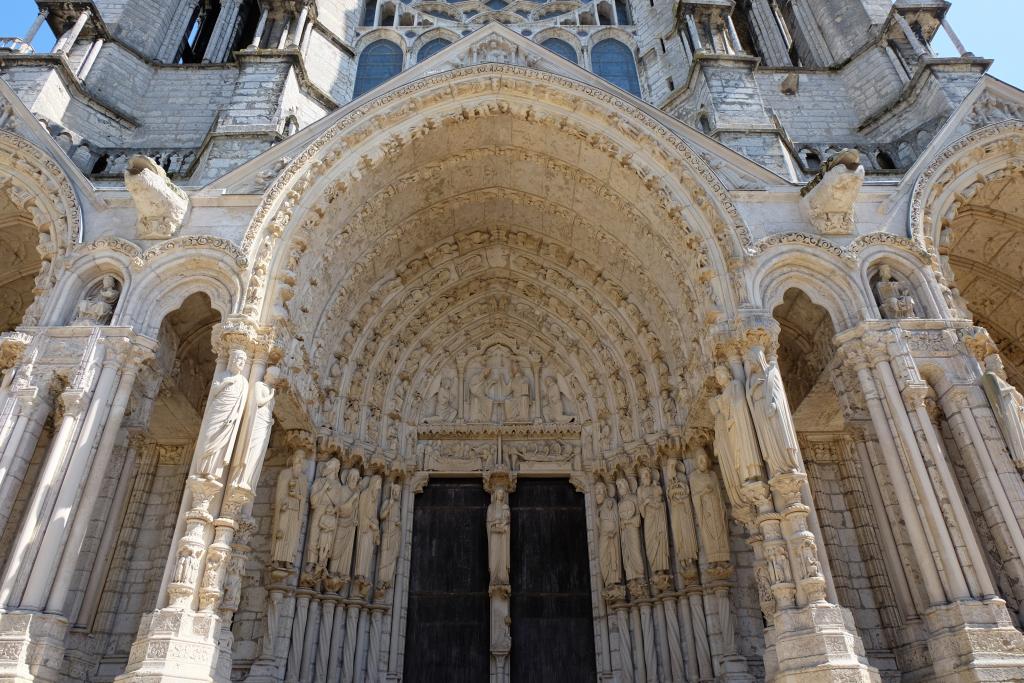My most recent book, Climate, Catastrophe, and Faith How Changes in Climate Drive Religious Upheaval, describes how climate-driven disasters sparked a variety of religious movements, whether apocalyptic, revolutionary, or revivalist. But there are circumstances when the climate smiles happily on the world, and that too has its religious consequences. This raises major questions about how how we write different kinds of religious history, and how much attention we pay to those underlying material factors.
From the late eleventh through the late thirteenth centuries, much of the world experienced what we call the Medieval Warm Period. That is presently a somewhat controversial term, because some use the idea to argue that our current global warming is nothing new, and that it need be neither lasting nor harmful. I absolutely do not agree with that idea, but I acknowledge that there is some debate about just how extensive that earlier warming was, and scholars these days describe it grudgingly as a “Medieval Climate Anomaly.” But something definitely was happening.
What we can say is that in Europe at least, temperatures did rise enough to allow longer growing seasons, more food surpluses, and more surplus wealth to invest in buildings and luxury goods. Peasants settled and reclaimed marginal lands for cultivation. Trade and sea routes also became vastly easier. Populations surged, people flocked into new towns and cities, supporting the rise of universities, and urban-based religious orders.
Rural prosperity and flourishing trade created an economic surplus that was channeled into public displays of wealth, and that in turn gave a whole new material basis to religious life. In a Christian world based on the compulsory payment of tithes, surging agriculture and thriving towns gave enormous capacity for building, as people thanked God for their evident and abundant blessings. The consequence was the landscape of cathedrals and churches that we think of today as the epitome of medieval culture and art. Although those edifices took decades or even generations to complete, the chronology of construction fits precisely with the height of the Warm Period, especially the years between 1150 and 1260, the highest of the High (and High Temperature) Middle Ages. Climatic conditions equipped communities with the motive, means, and opportunity to undertake an epic building boom.
Among the most celebrated monuments was the cathedral of Chartres (1194–1220). In France, the century after 1150 also saw the main phases of building at Notre Dame de Paris, Laon, Reims, Beauvais, Bourges, and Amiens; English counterparts were Canterbury, York, Wells, Salisbury, Lincoln, and Westminster Abbey; Spain produced Toledo, León, and Burgos. There were also many spectacular monastic houses. Any such list is subjective in the architectural treasures it highlights, and that list could be expanded much further. Over and above such a catalogue would be the thousands of parish churches built or rebuilt in this era, usually in the most fashionable styles of the time, whether Romanesque or Gothic.
Besides the physical fabric of the buildings themselves, the construction boom created a flourishing market for craftspeople of every kind: masons and sculptors, painters and engravers, embroiderers and textile workers, jewelers and the creators of stained glass. The sheer scale of the economic investment is almost inconceivable.
Religious orders transformed the Latin church and left their imprint in the physical landscape. From the late eleventh century, the roster of orders expanded and diversified enormously, and so did their numerical strength. This was the age of such long-famous orders as the Cistercians, Premonstratensians, and Carthusians. The Crusades produced their share of new religious orders as well, such as the Templars and Hospitallers, and this proliferation in itself suggests the contemporary population surplus. Only a society with such booming agriculture could afford to spare the men and women to abandon families and villages to go off to join those orders. This is a symptom of a population boom at work.
These new orders also contributed to the emerging society, filling important social niches, and sometimes becoming critical drivers of the medieval economy. Monasteries were in the forefront of technological innovation, particularly as they had the resources to invest in new machinery and techniques. They were active in building and popularizing watermills and windmills and in extending their use to agriculture and even industry, especially in textiles. Some historians have argued for a medieval “industrial revolution.”
By the mid-twelfth century, Cistercian houses could be found across much of western and central Europe. The burgeoning Cistercian communities sought new lands far removed from the busy and heavily populated secular world. Thus they expanded into undesirable waste territories, which they cleared and developed for pastoral agriculture. This in turn promoted the ongoing expansion into new rural settlements, and generated a boom in livestock and associated products. Almost by accident, this escape into the wilderness gave religious houses inordinate wealth and political power, and further escalated the building boom in churches and monasteries.
Between them, universities, monasteries, and friaries provided the setting for new learning and debate, for new theologies, new forms of spirituality. From the late eleventh century through the late thirteenth, we see the emergence and maturing of several ideas and beliefs that have been at the heart of Catholic doctrine ever since, and some of which—by no means all—have been inherited by later Protestant churches. It is startling to realize that so many key ideas and beliefs emerged or became far more central to church teaching at roughly the same time. They occurred when they did because prosperity allowed states and the social order to become more stable, while an unprecedented institutional foundation permitted the expansion of learning and speculation.
Those ideas include something as basic as the theory of Christ’s Atonement. From earliest times, Christians believed that Christ had in some sense died for the sins of the world, but the interpretations of that statement varied greatly. The dominant Western idea was formulated by Anselm of Canterbury in the 1090s, when he argued that Christ’s death satisfied the offense against God that humanity had committed through the Fall. By paying the debt, this sacrificial act redeemed humanity. That era, at the end of the eleventh century, also saw the growth of other foundational Catholic ideas, including the exalted doctrine of the Papacy as the monarchical head of the church, independent of secular control. Again, those ideas had been discussed in earlier times, but they were now declared openly and aggressively, generating decades of bitter church-state conflict, to the point of open warfare.
The Pope who was most closely associated with those claims, Gregory VII (1073–1085), also pressed another seemingly radical doctrine, demanding clerical celibacy. That practice was not new to the church and had been required several centuries before, but it had fallen into disuse. By reasserting that discipline, the church was seeking to demarcate clergy as a distinct caste or class, with all the privileges that entailed, and subject to internal discipline. About 1150, the monk Gratian compiled the work entitled The Concordance of Discordant Canons, or the Decretum, the first systematic effort to organize the church’s canon law. That system grew dramatically over the following century, again largely through the universities.
Adding to the prestige of the priestly order was a radical new emphasis on the transformation of bread and wine that occurred at the Eucharist, when those worldly materials literally become Christ’s body and blood. That idea had existed for centuries, but it was at the end of the eleventh century that it achieved a newly formal and elaborate status, and the word “transubstantiation” was invented to explain the philosophical underpinnings.
Many of these ideas were asserted and defended by Pope Innocent III (1198–1216), who is widely regarded as the greatest Pope of the Middle Ages, and perhaps of all time. His most visible memorial was the Fourth Lateran Council, in 1215, which offered a comprehensive survey of Catholic thought as it had emerged in recent centuries. That centrally included such ideas as transubstantiation, papal primacy, and clerical celibacy. In the mid-thirteenth century, the towering figure of Dominican friar Thomas Aquinas was systematizing Catholic theology and belief, supplying a foundation for all later generations.
Throughout the period, the key focus of piety was the Virgin Mary. The Virgin inspired multiple new forms of devotion: her image was widely reproduced in all forms of visual art and design, and she was commemorated in poetry and prose. Although Marian devotion had a long history before this era, it was above all in the High Middle Ages that it became so central. This was the era when the rosary became a beloved part of Catholic piety. In 1223, St. Francis created the world’s first Nativity scene in a cave in the city of Greccio, an innovative cultural symbol that spread triumphantly across all forms of Christianity.
Let me state my argument clearly. Catholicism looks like it does largely because of developments in these High Middle Ages. To that extent, it is a product of a warm sun and warm seas.
Let me stress that what I am offering here is what we might call an intellectual exercise, or a thought experiment. I am suggesting that a great deal of what we think of as major themes in Christian history – and specifically, in the Catholic tradition – come from a particular era, when society and culture were profoundly shaped by a favorable climate. Do I go too far in what I am claiming here? Do I run the risk of reducing religious developments to mechanistic responses to social and economic change? Maybe. But there is also a quite different danger, of writing about such things while paying no attention to those matters, which did so much to affect how people lived and thought. How do we strike the proper balance?














